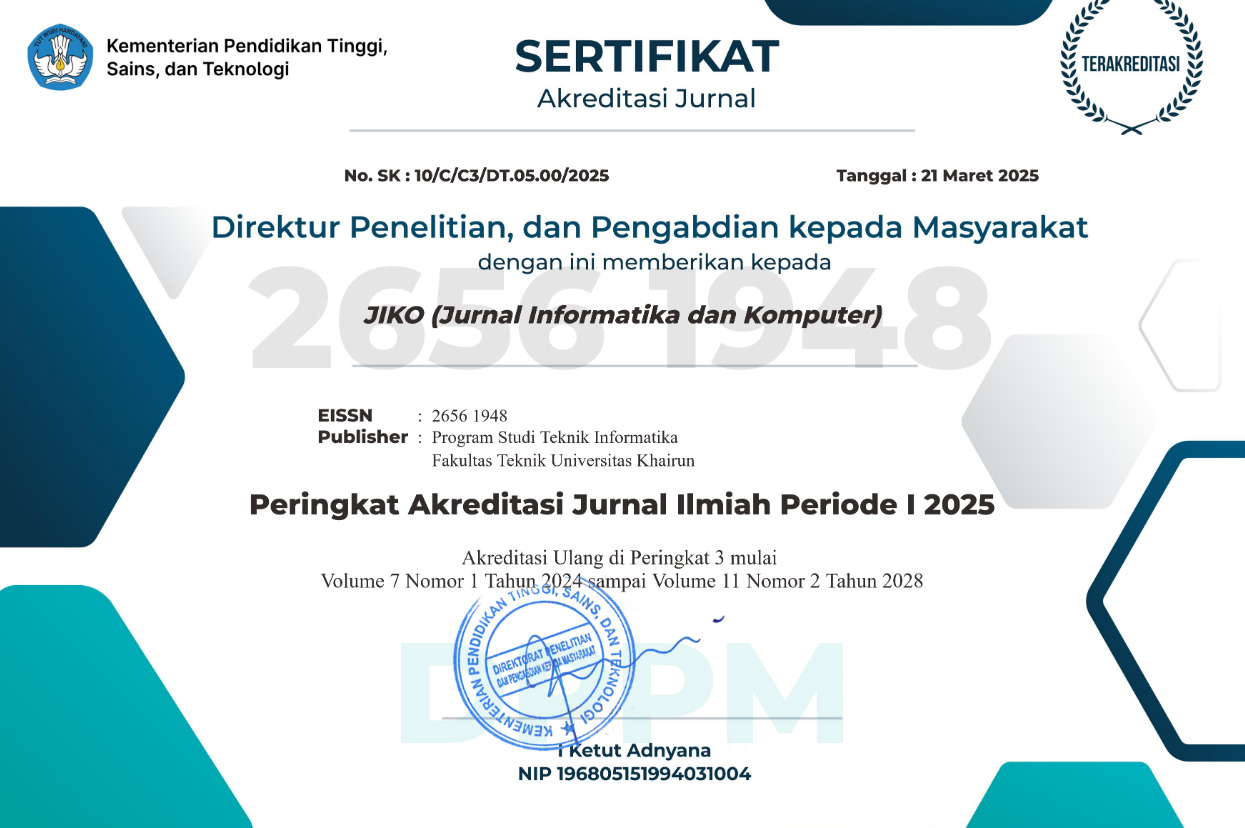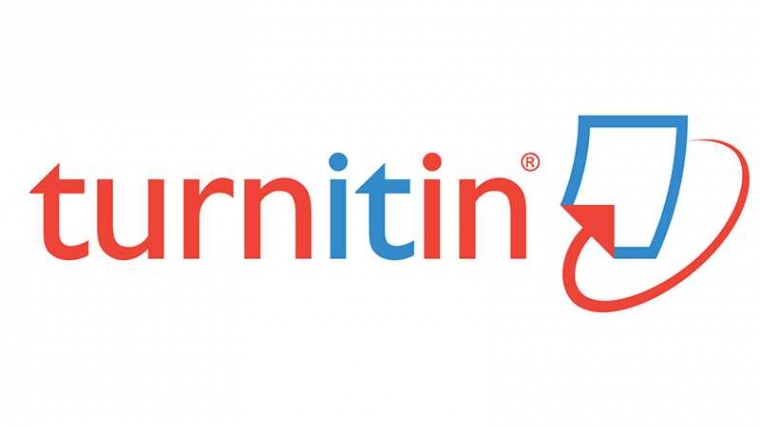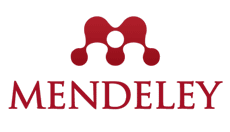SEGMENTATION OF SUBARACHNOID HEMORRHAGE ON BRAIN CT IMAGES USING U-NET AND ATTENTION U-NET: A COMPARATIVE ANALYSIS
Abstract
Full Text:
PDFReferences
C. Shorten and T. M. Khoshgoftaar, “A survey on Image Data Augmentation for Deep Learning,” J Big Data, vol. 6, no. 1, p. 60, Dec. 2019, doi: 10.1186/s40537-019-0197-0.
N. M. Dubosh and J. A. Edlow, “Diagnosis and Initial Emergency Department Management of Subarachnoid Hemorrhage,” Emerg Med Clin North Am, vol. 39, no. 1, pp. 87–99, Feb. 2021, doi: 10.1016/j.emc.2020.09.005.
A. Arab et al., “A fast and fully-automated deep-learning approach for accurate hemorrhage segmentation and volume quantification in non-contrast whole-head CT,” Sci Rep, vol. 10, no. 1, p. 19389, Nov. 2020, doi: 10.1038/s41598-020-76459-7.
Y. Yu, M. Li, L. Liu, Y. Li, and J. Wang, “Clinical big data and deep learning: Applications, challenges, and future outlooks,” Big Data Mining and Analytics, vol. 2, no. 4, pp. 288–305, Dec. 2019, doi: 10.26599/BDMA.2019.9020007.
S. Umapathy, M. Murugappan, D. Bharathi, and M. Thakur, “Automated Computer-Aided Detection and Classification of Intracranial Hemorrhage Using Ensemble Deep Learning Techniques,” Diagnostics, vol. 13, no. 18, p. 2987, Sep. 2023, doi: 10.3390/diagnostics13182987.
M. D. Hssayeni, M. S. Croock, A. D. Salman, H. F. Al-khafaji, Z. A. Yahya, and B. Ghoraani, “Intracranial Hemorrhage Segmentation Using a Deep Convolutional Model,” Data (Basel), vol. 5, no. 1, p. 14, Feb. 2020, doi: 10.3390/data5010014.
G. Litjens et al., “A survey on deep learning in medical image analysis,” Med Image Anal, vol. 42, pp. 60–88, Dec. 2017, doi: 10.1016/j.media.2017.07.005.
O. Ronneberger, P. Fischer, and T. Brox, “U-Net: Convolutional Networks for Biomedical Image Segmentation,” May 2015.
M. M. Khan et al., “A Deep Learning-Based Automatic Segmentation and 3D Visualization Technique for Intracranial Hemorrhage Detection Using Computed Tomography Images,” Diagnostics, vol. 13, no. 15, p. 2537, Jul. 2023, doi: 10.3390/diagnostics13152537.
L. Dai, Md Gapar Md Johar, and Mohammed Hazim Alkawaz, “Review of Semi-Supervised Medical Image Segmentation based on the U-Net,” Academic Journal of Science and Technology, vol. 11, no. 1, pp. 147–154, May 2024, doi: 10.54097/gmhkht38.
A. Vaswani et al., “Attention is All you Need,” in Advances in Neural Information Processing Systems, I. Guyon, U. Von Luxburg, S. Bengio, H. Wallach, R. Fergus, S. Vishwanathan, and R. Garnett, Eds., Curran Associates, Inc., 2017. [Online]. Available: https://proceedings.neurips.cc/paper_files/paper/2017/file/3f5ee243547dee91fbd053c1c4a845aa-Paper.pdf
O. Oktay et al., “Attention U-Net: Learning Where to Look for the Pancreas,” Apr. 2018.
F. El Abassi, A. Darouichi, and A. Ouaarab, “Comparative Analysis of U-Net with Transfer Learning and Attention Mechanism for Enhanced Medical Image Segmentation,” 2024, pp. 551–560. doi: 10.1007/978-3-031-68653-5_52.
X. L. Yang and Z. Y. Jin, “Att GGO-Net:A Semantic Segmentation Method of Lung CT Images with Self and Cross Attention Mechanism,” J Phys Conf Ser, vol. 2504, no. 1, p. 012017, May 2023, doi: 10.1088/1742-6596/2504/1/012017.
C. S. Chang, T. S. Chang, J. L. Yan, and L. Ko, “All Attention U-NET for Semantic Segmentation of Intracranial Hemorrhages In Head CT Images,” Dec. 2023, doi: 10.1109/BioCAS54905.2022.9948588.
I. B. L. M. Suta, M. Sudarma, and I. N. Satya Kumara, “Segmentasi Tumor Otak Berdasarkan Citra Magnetic Resonance Imaging Dengan Menggunakan Metode U-NET,” Majalah Ilmiah Teknologi Elektro, vol. 19, no. 2, p. 151, Dec. 2020, doi: 10.24843/MITE.2020.v19i02.P05.
S. Yuda Prasetyo, “BRAIN TUMOR DETECTION FROM MRI IMAGES USING DISCRETE COSINE TRANSFORM FEATURES AND EXTREME LEARNING MACHINE,” JIKO (Jurnal Informatika dan Komputer), vol. 6, no. 1, pp. 1–6, Apr. 2023, doi: 10.33387/jiko.v6i1.5230.
Roboflow, “SAHSegmentation Dataset,” https://universe.roboflow.com/subarachnoid/sahsegmentation. Accessed: Jun. 17, 2025. [Online]. Available: https://universe.roboflow.com/subarachnoid/sahsegmentation
S. Tenny, J. Das, and W. Thorell, “Intracranial Hemorrhage - StatPearls - NCBI Bookshelf.” Accessed: May 26, 2025. [Online]. Available: https://www.ncbi.nlm.nih.gov/books/NBK470242/
DOI: https://doi.org/10.33387/jiko.v8i2.9958
Refbacks
- There are currently no refbacks.












